Journal of Civil Engineering and Environmental Sciences
Solid waste management challenges and solutions: The case of the city of Khouribga (Morocco)
Youssef Salama1,2* and Mohammed Chennaoui2
2Laboratory of Life Science and Earth (SVT), Regional Centers for the Professions of Education and Training (CRMEF), El Jadida, Morocco
Cite this as
Salama Y, Chennaoui M (2024) Solid waste management challenges and solutions: The case of the city of Khouribga (Morocco). J Civil Eng Environ Sci 10(1): 011-020. DOI: 10.17352/2455-488X.000078Copyright License
© 2024 Salama Y, et al. This is an open-access article distributed under the terms of the Creative Commons Attribution License, which permits unrestricted use, distribution, and reproduction in any medium, provided the original author and source are credited.In Morocco, like in many developing countries, the management of solid waste, especially household solid waste, is a major concern. It is estimated that each person generates an average of 0.67 kilograms of urban waste per day, while in rural areas, this figure is 0.3 kilograms per day. The collection of urban solid waste is regular and almost daily, reaching approximately 5.5 million metric tons per year. The management of household waste is a major concern for all urban communities. The city of Khouribga, like many other Moroccan cities, faces various environmental challenges such as air pollution, waste management, and preservation of natural resources. In order to address these issues, it is essential to gather accurate and comprehensive information to develop effective and sustainable strategies. In this context, efforts are being made to optimize and improve the collection of household solid waste in the urban municipality of Khouribga. This study has revealed the existence of technical and social constraints that hinder the smooth operation of the current solid waste collection in this city. Therefore, the mobilization of the municipality, service providers, and the population is necessary to overcome these challenges.
Introduction
Since the early 1990s, environmental protection has become a major collective concern [1]. The issue of waste affects each individual on a daily basis, both professionally and personally. Waste management is no longer simply a question of organizing and optimizing existing techniques, whose effects on the environment appear to be controlled. It is now perceived as a crucial environmental challenge, as well as an economic and management issue [2].
Indeed, in recent years, the issue of waste has become alarming, both in developed countries and in developing countries. The increase in the volume of municipal solid waste poses serious problems in urban areas. Population growth, improvement in per capita income, and economic activity levels have led to an increase in solid waste production. This high production of waste poses a threat to environmental quality and living conditions, and the management of this solid waste has become the main concern for communities [3].
Morocco is facing a continuous increase in the volume of waste generated, which can be explained not only by steady population growth but also by the evolution of production and consumption patterns, as well as improvements in the standard of living. The different types of waste include household waste, non-hazardous industrial waste, specific waste, green waste, hospital waste, construction waste, and waste related to cleaning services. It is important to note that household waste cannot be considered independently of its geographical context, whether it be physical or social geography. Maximova [4] work focuses on analyzing the interface between what could be called social systems (population, origin or social status, behavior) and waste (nature, production), as well as the consequences of this interface in space. Therefore, waste management cannot be addressed without considering the geographical dimension, which explains why each geographical region must develop its own waste management strategy. Morocco, a country considered to be developing, has made significant progress in this field but still lags behind the waste management systems found in developed countries. The adoption of successful concepts in some countries and their adaptation to the Moroccan context have not resulted in much progress in the sector or resolved the various problems faced by cities [2,5]. Consequently, municipal waste management remains problematic for all communities. Often, there is a reductionist analysis of waste-related issues, attributing them solely to insufficient resources.
However, household waste is a complex and diverse subject with interdisciplinary factors at play [6]. While local communities are responsible for managing household waste, the effective functioning of the service largely depends on the cooperation and compliance of citizens [7]. Therefore, individual behavior as a contributing factor needs to be taken into consideration in all waste management strategies. That is why waste management issues are strongly linked to the perception of what waste is, and what it represents to citizens in terms of environmental degradation risk and health hazards. In fact, effective waste management is fundamentally connected to the behavior of residents, how citizens dispose of their waste, the collection methods used, the frequency at which they get rid of their waste, their adherence to waste bin placement and distribution in neighborhoods, as well as their participation in waste management operations. Thus, the implementation of any strategy for household waste management must take into consideration the human factor, and the success of waste management policies relies primarily on citizen participation [8,9].
In Khouribga, Morocco, waste management has been identified as one of the city’s priorities. The architects of the Plan for the city of Khouribga, which aims to strengthen regional cooperation and integration, have included it as a major issue in the environment chapter of the section dedicated to sustainable development. Its importance has also been recognized in the latest Action Plan for the management of the environment in the Khouribga region, which was signed by the municipality of Khouribga in collaboration with private companies such as TECMED Morocco and OZONE Morocco. These companies were responsible for implementing and executing an integrated plan to maintain the cleanliness of the city. This plan includes the following actions:
Collection of households and similar waste, bulky waste, wild waste, green waste, and rubble, as well as the transportation of the collected waste to the public landfill or transfer center and their disposal.
Collection of garden waste using equipped trucks to allow, if necessary, the incorporation of the resulting product into the overall tonnage of household waste.
Public landfilling and burial of waste
Cleaning of roadways, sidewalks, drains, and public spaces, as well as the transportation of the collected waste to the public landfill or transfer center and their disposal.
The study explores solid waste management challenges in the City of Khouribga, Morocco, and proposes solutions. It analyzes household waste production and management, including responsible family members, collection methods, timing, and frequency. The focus is on localized challenges and solutions in waste management in Khouribga, highlighting residents’ interest and education influence on waste recycling and disposal. The study aims to provide valuable insights and recommendations for improving waste management practices in the city of Khouribga.
Materials and methods
Study area
The city of Khouribga, populated in the twenties thanks to the discovery of phosphate deposits, is located in the center of the kingdom, 120 km southeast of the great Casablanca, and is part of the Beni Mellal-Khenifra region (Figure 1). The area of the city is around 25 km2 at an altitude of 800 m, with a semi-arid climate, and an average rainfall of 350 mm. The city of Khouribga is known for its mining activity considered to be the most important phosphate production zone in the world. Socio-economically, it is a city that presents several points of resemblance to a large category of Moroccan cities [10].
Since its creation the population of the city has been in constant evolution, it currently has more than 172,000 inhabitants (High Commission for Planning of Morocco (HCP)) distributed in 36 districts (Municipality of Khouribga).
Figure 2 shows, the demographic projections for the Khouribga residential area from 2014 to 2030 indicate a rising trend in urban areas and a declining trend in rural areas. In urban areas, the population increased from 376,496 to 400,943 people between 2014-2018, and from 424,656 to 430,329 people between 2022-2023, with a projected population of 466,263 people in 2030. On the other hand, in rural areas, the population was 164,612 people in 2014, 157,060 people in 2018, and decreased to 147,607 people in 2023, with an estimated 134,169 people in 2030. These data show a continuous growth of the urban population and a decrease in the rural population in the Khouribga region. This increase in urban population will subsequently lead to increased consumption and a higher production of waste.
The study area climate is subhumid to semi-arid, influenced by the Atlantic Ocean, with temperate winters and fairly hot summers; average temperatures vary between 11°C and 25°C; average annual precipitation records values of 350 mm. The city of Khouribga is ranked among the most densely populated regions in the Kingdom (Figure 1), with a density of 117 inhabitants per Km2, compared to a national average of around 44 inhabitants per km2 [10]. The distribution of the population in the city of Khouribga is mentioned in Table 1.
Figure 3 shows the distribution of industrial units in the city of Khouribga, according to the Annual Survey of Industries conducted by the Ministry of Commerce and Industry. The dominant economic activity in this city is mining, followed by trade and craftsmanship.
As the number of commercial units installed in the city of Khouribga exceeds 16,000, in addition to approximately 1,600 street vendors, it also has a wholesale market for fruits and vegetables and an abattoir. The city has two hospitals, including a provincial hospital and a private one, the Multidisciplinary Hospital Cheikh Zaid. It also has five dispensaries distributed in different neighborhoods of the city, as well as over six private clinics and more than 100 medical offices.
Waste Production in Khouribga
Until 2006, the municipality of Khouribga was responsible for all waste and cleaning operations in the city. After that date, the municipal council delegated waste management to private companies, which until now have been handling all waste-related operations. According to recent statistics, household waste production in the city of Khouribga has increased from 30,000 tonnes in 2006 to over 73,000 tonnes in 2024. This growth can be attributed to several factors, including population growth, improvement in living standards, and changes in consumption patterns.
Waste collection method
Since 2006, the municipality of Khouribga has delegated the management of its household waste to private companies (TECMED from 2006 to 2016, and currently the company OZONE). This management method has spread to several Moroccan cities to help municipalities cope with the various problems related to this service, problems that exceed their capacities.
Waste collection in the city is mainly done collectively using containers. There are 953 770-liter containers and 159 360-liter containers distributed throughout almost the entire city. These containers are divided into 8 collection sectors, except for some peripheral areas where accessibility is an issue. In these peripheral regions, metal containers with a capacity of 5m3 are used. The disposal of the household and similar waste is carried out daily, from Monday to Friday, between 8 pm and 2:30 am. Routes are planned according to a collection plan so that the vehicles are loaded to their maximum capacity. The waste loaded into the vehicles is then directly transported to the public landfill without any intermediate stops or parking. The various stages of Municipal Solid Waste (MSW) management in the Urban Commune of Khouribga (CUK) can be represented by the diagram shown in Figure 4.
Conditions for conducting the survey
Questionnaire design: The choice of the survey method through a questionnaire and how we operationalized different concepts to construct our questionnaire led us to use the method of self-administered online survey among a convenience sample [9]. From the perspective of quantitative analysis, the questionnaire seemed to be the most relevant tool for gathering the necessary data to test our hypotheses. It was built based on our literature review, as well as certain elements highlighted in the qualitative exploratory study. The final version of the questionnaire is structured according to the various dimensions we aim to capture. In sequence, the questionnaire addresses individuals’ attitudes toward waste sorting, their perception of the local public administration, their motivation to sort waste, and the frequency of their sorting behavior (Figure 5).
Sample size
Generally, marketing studies use an average sample size of 200 [11]. In order to strike a balance between practical constraints and study quality, a sample size of 350 individuals or households was set. In the end, 439 responses were obtained, out of which 344 were usable.
Analysis of specific values
Specific values include non-responses and how to handle them, as well as all potential missing or aberrant values. Considering the chosen method of administering the questionnaire, we cannot quantify nonresponse refusal. In fact, individuals were given the option to click on the link to participate in the study or not. In our study, quantifiable nonresponses refer to incomplete answers: an individual clicked on the link, started answering the questionnaire, but abandoned it before completion. Given the length of our questionnaire, the rate of incomplete responses is relatively high (around 28%). The LimeSurvey software allowed us to record complete and incomplete responses to the questionnaire. Thus, after removing incomplete responses, our final sample consists of 344 households.
The survey administration mode on LimeSurvey prohibits skipping to the next set of questions if the individual has not answered all the questions displayed on the page. As a result, it was impossible to validate a questionnaire without answering all the questions, therefore there were no missing values (only partially filled questionnaires, hence incomplete, as mentioned above).
Results and Discussions
Production and management of household waste
The production and management of waste in households are important aspects of daily life. It is essential to find effective ways to reduce waste production and manage them responsibly. That is why it is crucial to understand that every household has a role to play in the efficient management of waste, and these recommendations can help establish a solid foundation for improved organization and management.
The results of the survey (Figure 6) reveal that in over 58.03% of households, the responsibility for waste management primarily falls on the mother. Children are also involved to a lesser extent, with a participation rate of 6.44%, in handling waste collection and disposal. However, this practice of entrusting waste disposal to children poses problems as the bins are not easily accessible to them, resulting in the accumulation of garbage around them. This situation highlights the need to rethink our approach to household waste management.
It is essential to find solutions that allow all family members to contribute effectively to this task, taking into account their abilities and constraints. One possible solution could be to install collection bins specifically designed for children at an appropriate height and easily accessible, allowing them to deposit waste without difficulty. Additionally, it is important to raise awareness among all family members about the importance of waste management and proper practices to adopt [12].
However, a collective and cooperative approach to waste management would not only help maintain a clean and healthy environment but also promote environmental education among children. By teaching them from a young age about the significance of preserving the environment, we contribute to shaping responsible individuals who are aware of the impact of their actions on the planet [13].
Approximately 60.32% of households use buckets as a means of waste collection inside their homes, while 20.78% use plastic bags and 15.8% use paper bags (Figure 7). It is worth noting that these bags are not specifically purchased by households for garbage collection but rather used from the used bags they have after purchasing or acquiring other items.
The results also indicate that only 14.31% of households take out their waste in the evening, 29.42% do it in the morning, and 48.97% do it at random times (Figure 8). With regards to the frequency of waste disposal, 53.66% of households do it once a day, 15.92% do it twice a day, and 21.25% of households dispose of their garbage more than twice a day. It is interesting to note that 9.17% of households do not have a stable habit regarding the schedule for taking out their trash (Figure 9).
These values highlight the different waste management practices within households. It is crucial to promote increased awareness regarding the use of reusable bags and to strengthen proper waste collection and disposal habits to minimize their environmental impact. These behaviors explain the issues faced by the waste collection company. Indeed, households disposing of their garbage at different times than the collection period and repeatedly depositing trash disrupt the collection operations, leading to the presence of waste around bins and the formation of black spots in the city. These uncivil behaviors can be explained by the lack of resources and insufficient dedicated space for domestic waste management within households [14,15]. Therefore, this aspect needs to be considered in any proposal aiming to encourage source separation.
Problems with waste management in neighborhoods
Effective management of household waste and street waste is of crucial importance in ensuring the cleanliness of a neighborhood [16]. This study highlights the difficulties faced by households regarding waste management beyond their homes, as well as the problems experienced by neighborhoods from residents’ perspective. The comfort of individuals is considered a vital element in evaluating the performance of local public service for household waste management. Factors such as collection frequency, average distance to travel to dispose of their waste, and satisfaction rate with the basic collection service are taken into account.
According to the results obtained, it is revealing that 45.98% of garbage bins are located within a distance of less than 100 meters from residential areas, while 27.63% are situated at a distance of 100 meters. Additionally, 10.66% of the bins are located at a distance greater than 100 meters, and 15.73% are situated over 200 meters away (Figure 10). Despite the presence of garbage bins in the neighborhoods, it is regrettable to note that some households persist in depositing their trash on the sidewalks. Several factors can explain such behavior, such as the distance between the residences and the garbage bins [17], as well as citizens’ indifference towards waste-related issues and the lack of civic responsibility among certain individuals [18]. Even though efforts have been made to facilitate waste management by placing these bins in the vicinity, it appears that their placement is not always ideal for all households. Some residents may find themselves far from the bins, which can discourage them from making the necessary trips to dispose of their trash properly.
Moreover, the indifference of some citizens towards environmental issues contributes to perpetuating the bad habit of depositing trash on sidewalks [19,20]. Ignorance or lack of awareness regarding the harmful consequences of this practice can lead to irresponsible behavior. It is important to highlight that this lack of civic responsibility is the result of a minority of individuals, and the majority of the population properly disposing of their waste by depositing it in designated bins. However, it is essential to further educate citizens about the importance of proper waste disposal and promote a culture of environmental respect within society. The results indicate that the majority of households claim to have no difficulty in getting rid of their waste, except for garden waste, which poses a problem for residents in certain neighborhoods, particularly the OCP village neighborhood, due to the abundance of garden spaces in their homes.
The conducted survey (Figure 11) shows that residents in the neighborhoods report that 53.66% of waste-related issues are caused by a lack of available public waste bins. Additionally, 15.92% of residents claim that there are simply public waste bins nonexistent in their neighborhood. Regarding waste management in the neighborhood, 21.25% of households feel that the collection schedules provided by the waste collection company are ineffective. Furthermore, 9.17% of households attribute these issues to uncivil behavior from residents, such as moving the bins or dumping garbage next to the bins. Therefore, it is clear that various factors contribute to the waste management problems in these neighborhoods.
These results confirm the observations made during various tours conducted in all neighborhoods of the city. Indeed, we have noticed that all neighborhoods are equipped with waste bins, but the collection frequency and distance between the bins vary. In some densely populated areas, we have observed that the waste overflows from the bins. Furthermore, in areas where 5 m3 metal containers are used, the waste is often thrown around the containers, creating black spots of dirt. Waste collection agents claim that some residents refuse to have a waste bin near their homes. As a result, they often try to move them away from their residence, which disrupts the collection points and complicates the work of the agents in this service.
In addition, during our tours around the neighborhoods, we observed that construction waste is being discarded in existing empty spaces, sometimes mixed with gardening waste. These spaces are thus turning into small landfills, compromising the beauty of the city. It is important to note that the city of Khouribga, like many other medium-sized cities in Morocco, is experiencing significant urban expansion. Therefore, it is essential to establish a collection system that takes into account these two types of waste, referred to as assimilated waste (construction and gardening waste) [21]. All of this highlights the efforts that waste management authorities must put in to change these habits. This process may require resources and time if not taken into consideration right now.
Interests of residents in waste management
In this section of the survey, we asked questions aimed at assessing the interest of residents in the field of waste management, in order to gauge their level of awareness regarding the risks associated with their waste. It is clear that the vast majority of households are unaware of what happens to their waste once it is thrown away. The results of our survey also reveal that there is no correlation between the level of education of citizens and their knowledge of waste management. Even educated individuals do not appear to know or be interested in the ultimate fate of the waste they produce. These findings clearly highlight the ignorance of citizens regarding the management of their waste and the problems and dangers that arise from it.
Indeed, once the waste is removed from their homes, it generates no interest or enthusiasm among individuals. There is thus a clear correlation between the distance between individuals and waste, as well as their perception of waste and the associated risks [22]. The further away the waste is and the more it is out of sight, the more it is minimized, along with the risks associated with it [23]. This reality highlights the low level of concern expressed towards environmental issues and the social motivations associated with waste management. These findings must be thoroughly considered when developing a waste management policy.
Sorting is an inevitable concept in any effective waste management strategy, and waste sorting at the source is the cornerstone of successful management in terms of cost optimization, safety, and environmental preservation [24,25]. However, at the national level, this concept is not yet widely implemented, resulting in a lack of information or data that can help establish a collection method adaptable to this concept. This part of the survey provides insights into the residents’ level of knowledge regarding waste sorting and recycling, as well as their potential engagement in a source sorting process. Clarifications are given regarding the factors to consider for the feasibility of source sorting and the adherence of households to this management method.
According to the results presented in Figures 12,13, it is evident that citizens’ level of education does not guarantee a good understanding of recycling and waste sorting. In fact, between 43% and 52% of individuals with a high level of education do not understand anything about this subject. These findings emphasize that education level cannot be considered a reliable indicator of awareness and knowledge concerning recycling and waste sorting [26,27]. It is essential to implement more targeted and accessible initiatives to inform and educate the entire population, regardless of their education level. While these figures may seem concerning, they also reveal a significant opportunity for improvement in environmental awareness initiatives [28,29].
One possible explanation is that the country’s integration in this field is recent since the law regarding waste management and disposal in Morocco was only enacted in November 2006 [30]. Some implementing decrees have been adopted subsequently, while others are still being developed (SECEE). Additionally, a National Program for Household and Similar Waste Management (PNDM) has been developed in this regard, with an estimated cost of approximately 40 billion Dirhams (SECEE). This program aims to achieve its objectives in 2015. In order to generate public engagement towards a modern collection system, we have included in our questionnaire simple and accessible sections explaining the crucial importance of waste sorting in waste management and environmental preservation. Once the explanations were provided, we designed a questionnaire to determine their inclination to sort their waste and their willingness to financially contribute to the modernization of this sector.
Effectively, the implementation of a source-separation system requires significant efforts, even in the most advanced countries in this field [31,32]. Despite their limited knowledge of waste sorting concepts, the citizens of Khouribga have demonstrated a willingness for change and cooperation. Waste sorting is a behavior closely linked to personality and individual values, which opens up the possibility of implementing source separation at the household level, even though difficulties may hinder its full adoption as a habit among citizens [33]. On the other hand, additional studies demonstrate that some households benefit from their waste by selling leftover bread and glass or plastic bottles, particularly households residing in densely populated neighborhoods. These habits could be reorganized through the introduction of a modern source-separation system adaptable to this context.
In the context of this approach, households were surveyed about the necessary means, according to their perspective, to facilitate source separation. The results of this survey revealed that the majority of households believe they need a suitable container for this operation, which would not take up too much space in their homes. They also suggested the provision of plastic bags according to their needs. These results highlight the possibility of improving collaboration and citizen involvement in waste management. To do so, it is essential to raise awareness among residents about the risks of improper waste management, as well as the significant role each household can play in this process. This awareness should reach all residents, regardless of their level of education or income level.
Solutions for integrating municipal solid waste management in the city of Khouribga
The implementation of a waste management hierarchy approach in developed countries is very common. Some studies [34,35] discussed the successful implementation of the waste management hierarchy for municipal solid waste management (MSWM). The limitation of data and information for waste management hierarchy in the city of Khouribga has placed a barrier for the city municipality to implement this approach. However, for long-term planning and management, the municipality should consider a combination of the various technologies to opt for an integrated approach. To indicate this approach, the municipality of the city of Khouribga should consider the option of waste management hierarchy. In this case, several options will be highlighted below:
Option 1: Waste Reduction - Waste reduction can be achieved at several levels, such as reduction of per capita waste generation through public education and government policy initiatives. It can also be helped by source separation of recyclable materials and separate collection for recycling purposes.
Option 2: Recycling - At present, there is no organised programme for recycling in the city of Khouribga. Stakeholders are now working on their own programme and objectives. Measures need to be taken to integrate the segregated efforts of the individual stakeholders into a single recycling programme. As such, measures have to be taken from both short-term and long-term perspectives. The aim for the short-term measures shall be to mobilise the stakeholders towards active recyclable generators and enhance their participation. Long-term measures should aim toward increased diversion of waste for recycling, an efficient recyclable collection system, and an organised end-market.
Option 3: Biological treatment/composting - Composting achieves the microbiological degradation of organic matter to produce a recycled organic product for use in agriculture, gardens, parks, etc. The technology of composting municipal waste is well established, and there is much detailed information and operation experience. Even though the technology of composting MSWM is well established, only a few of the refuse composting plants around the world are economically successful. The drawbacks commonly experienced with composting are its high cost and low value of the compost products. Subsequently, composting in the city of Khouribga has not been pursued as a solution to MSW disposal problems because of the following reasons:
- The quality of the product depends on the waste it is fed; therefore, waste separation is very important.
- A compost plant requires a large area.
- There is a possibility of secondary pollution caused by the inclusion of heavy metals in waste. The product is thus limited for use in horticulture and not at all for agriculture.
- There is a lack of suitable markets for compost and a lack of economies of scale for quantities for the recyclable market.
- Composting is not a complete solution since landfill disposal would still be required for components of waste that are not suitable for composting.
Option 4: Incineration - General observation indicates that incineration may be feasible where landfill is scarce and pose a threat to the aquifer or are remote from the actual MSW generation centre. Modern incineration and flue gas cleaning technologies make waste incineration an environmentally acceptable option for waste treatment. It is possible to locate such plants even in densely populated areas. Incineration has played a role in MSWM for more than 5 years in many major Japanese, European, and American cities. Despite the high capital investment, expensive operation and maintenance costs as well as the need for environmental pollution measures caused by emissions, the advantages of incineration outweigh the disadvantages, such as:
- Waste volume reduction is highly efficient.
- Offensive odour is limited.
- Hazardous and infectious materials are neutralized by combustion at high temperatures.
- There is an energy recovery.
Conclusion
From the beginning to the end of the MSWM chain, it is one of the most problematic subjects in the scope of environmental quality. Beginning in our home and reaching the final destination (landfill) passing through collecting and transport operations and treatment processes, each one of the elements is important, and sensitive technical systems deserve a detailed and correct analysis. Generally, MSWM problems are due to ineffective and improper handling. Some problems have reached a critical level and need urgent action for planning, designing, and implementation. Any initiative aimed at improving quality of life and public health cannot succeed without active participation from the affected population. In the case of household waste management, it is essential to establish effective collaboration between the municipality, the company responsible for delegated waste management, and the citizens. In the city of Khouribga, proper waste management thus requires the involvement and accountability of everyone. Despite a high waste collection rate in this city, as well as the involvement of a specialized company in household garbage collection, several waste-related issues persist. The main cause of these constraints lies in the behavior of citizens, which disrupts the collection process. The incivility of some residents and the lack of awareness regarding waste issues and their impact on the environment hinder improvement efforts. It is therefore crucial to involve households and make them accountable within a new collection system. However, it is necessary to consider the lifestyle and habits of the inhabitants, while also recognizing the crucial role played by homemaking women in this field.
Furthermore, it is crucial to integrate the practice of source separation of waste to ensure an effective household waste management system and reduce the amount of waste sent to landfills, promoting recycling. However, it is important to consider the daily habits of residents and provide them with adequate support, such as awareness workshops and training organized within neighborhoods. The media also plays a crucial role in this process. Establishing an ecological relationship between the citizens of the city of Khouribga and their environment requires effort and time. We encourage researchers to study the environmental situation in the city of Khouribga in order to address the current lack of information and specific data for this region. These studies could provide crucial insights into sources of pollution, local environmental impacts, and the community’s needs for sustainable development.
- Echchad M, Ghaith ASM. Green Marketing in Morocco. SEA-Practical Application of Science. 2022; 7-16.
- Dahchour A, Hajjaji SE. Management of solid waste in Morocco. Waste Management in MENA Regions. 2020; 13-33.
- Perkumienė D, Atalay A, Safaa L, Grigienė J. Sustainable waste management for clean and safe environments in the recreation and tourism sector: a case study of Lithuania, Turkey, and Morocco. Recycling. 2023; 8(4):56.
- Maximova SG. Complex Social Systems in Dynamic Environments: Advanced Theories, Innovative Methods, and Interdisciplinary Research Results. : Springer International Publishing. 2023; 1264.
- Zorpas AA. Strategy development in the framework of waste management. Sci Total Environ. 2020 May 10;716:137088. doi: 10.1016/j.scitotenv.2020.137088. Epub 2020 Feb 3. PMID: 32059326.
- Concari A, Kok G, Martens P. A systematic literature review of concepts and factors related to pro-environmental consumer behaviour in relation to waste management through an interdisciplinary approach. Sustainability. 2020; 12(11):4452.
- Kyere R, Addaney M, Akudugu JA. Decentralization and solid waste management in urbanizing Ghana: moving beyond the status quo. In, Municipal Solid Waste Management. : IntechOpen. 2019; 214.
- Ghosh SK. Sustainable Waste Management: Policies and Case Studies: 7th IconSWM—ISWMAW 2017. Springer Nature Singapore. 2020; 1: 729.
- Simonofski A, Vallé T, Serral E, Wautelet Y. Investigating context factors in citizen participation strategies: A comparative analysis of Swedish and Belgian smart cities. International Journal of Information Management. 2021; 56: 102011.
- Salama Y, Salama O, Chennaoui M, Mountadar M. Study of dysfunction into activated sludge basins in sewage treatment plant of the City of Khouribga (Morocco). Journal of Materials and Environmental Science. 2020; 11(6):922-942.
- West BT, Zhang S, Wagner J, Gatward R, Saw HW, Axinn WG. Methods for improving participation rates in national self-administered web/mail surveys: Evidence from the United States. PLoS One. 2023 Aug 4;18(8):e0289695. doi: 10.1371/journal.pone.0289695. PMID: 37540678; PMCID: PMC10403122.
- Suardi LR, Gunawan B, Arifin M, Iskandar J. A review of solid waste management in waste bank activity problems. International Journal of Environment, Agriculture and Biotechnology. 2018; 3(4):264433.
- Yoshida M. Social development and the environment—a view from solid waste management. International Development and the Environment: Social Consensus and Cooperative Measures for Sustainability. 2020; 27-43.
- Ike C, Ezeibe C, Anijiofor S, Daud N. Solid waste management in Nigeria: problems, prospects, and policies. The Journal of Solid Waste Technology and Management. 2018; 44(2):163-172.
- Azaze D. Assessing the Impact of Household Waste Disposal Practices on Water Quality of Womba River. A Case Study from Sawla Town, Ethiopia. : Bod Third Party Titles. 2020; 118.
- Limon MR, Vallente JPC, Corales NCT. Solid waste management beliefs and practices in rural households towards sustainable development and pro-environmental citizenship. Global Journal of Environmental Science and Management. 2020; 6(4):441-456.
- Kanuku S. Effectiveness of newly installed waste collection bins in managing solid waste in Machakos Town, Kenya. St. Paul's University. 2020; 88.
- Esmaeilian B, Wang B, Lewis K, Duarte F, Ratti C, Behdad S. The future of waste management in smart and sustainable cities: A review and concept paper. Waste Manag. 2018 Nov;81:177-195. doi: 10.1016/j.wasman.2018.09.047. Epub 2018 Oct 9. PMID: 30527034.
- Fasihi H, Parizadi T. Analyzing household's environmental behavior on solid waste management and its relations with population and housing characteristics (The case: Amlash city, Iran). J Environ Manage. 2021 Aug 15;292:112686. doi: 10.1016/j.jenvman.2021.112686. Epub 2021 May 19. PMID: 34022647.
- Heffes G. Sustainability: Waste and Its Social, Cultural, and Aesthetic Re-significations. In, Visualizing Loss in Latin America: Biopolitics, Waste, and the Urban Environment. : Springer. 2023; 115-190.
- Ahmed E, Mustapha M, Mohammed R, Tarik C, Abderrahim M. Characterization of household and assimilated waste in the city of Tangier. International Journal of Innovation and Applied Studies. 2016; 18(2):512-528.
- Odonkor ST, Sallar AM. Correlates of household waste management in Ghana: implications for public health. Heliyon. 2021 Oct 21;7(11):e08227. doi: 10.1016/j.heliyon.2021.e08227. PMID: 34765770; PMCID: PMC8570949.
- Programme UNE (2002). Training Resource Pack for Hazardous Waste Management in Developing Economies. : Keynote Publishing Company. 180.
- Waite R. Household waste recycling: Routledge. 2013; 194.
- Challcharoenwattana A, Pharino C. Co-benefits of household waste recycling for local community’s sustainable waste management in Thailand. Sustainability. 2015; 7(6):7417-7437.
- Rousta K, Zisen L, Hellwig C. Household waste sorting participation in developing countries—a meta-analysis. Recycling. 2020; 5(1):6.
- Wang H, Liu X, Wang N, Zhang K, Wang F, Zhang S, Wang R, Zheng P, Matsushita M. Key factors influencing public awareness of household solid waste recycling in urban areas of China: A case study. Resources, Conservation and Recycling. 2020; 158:104813.
- Brotosusilo A, Nabila S, Negoro H, Utari D. The level of individual participation of community in implementing effective solid waste management policies. Global Journal of Environmental Science and Management. 2020; 6(3):341-354.
- Debrah JK, Vidal DG, Dinis MAP. Raising awareness on solid waste management through formal education for sustainability: A developing countries evidence review. Recycling. 2021; 6(1):6.
- Dahchour A, El Hajjaji S, Dhiba D, Ghosh SK. Circular economy in Morocco: status and perspectives. Circular economy: recent trends in global perspective. 2021; 29-67.
- Oduro-Kwarteng S, Anarfi K, Essandoh H. Source separation and recycling potential of municipal solid waste in Ghana. Management of Environmental Quality: An International Journal. 2016; 27(2):210-226.
- Moh Y. Solid waste management transformation and future challenges of source separation and recycling practice in Malaysia. Resources, Conservation and Recycling. 2017; 116:1-14.
- Barr S. Household waste in social perspective: values, attitudes, situation, and behaviour. : Taylor & Francis. 2017; 206.
- Makan A. Optimisation de la gestion des déchets solides ménagers: Cas du Maroc. : Editions universitaires européennes. 2013; 364.
- Salama Y. Gestion des déchets solides municipaux au Maroc: cas de la ville d’El Jadida.: Edilivre-Aparis. 2013 ; 76.
Article Alerts
Subscribe to our articles alerts and stay tuned.
 This work is licensed under a Creative Commons Attribution 4.0 International License.
This work is licensed under a Creative Commons Attribution 4.0 International License.
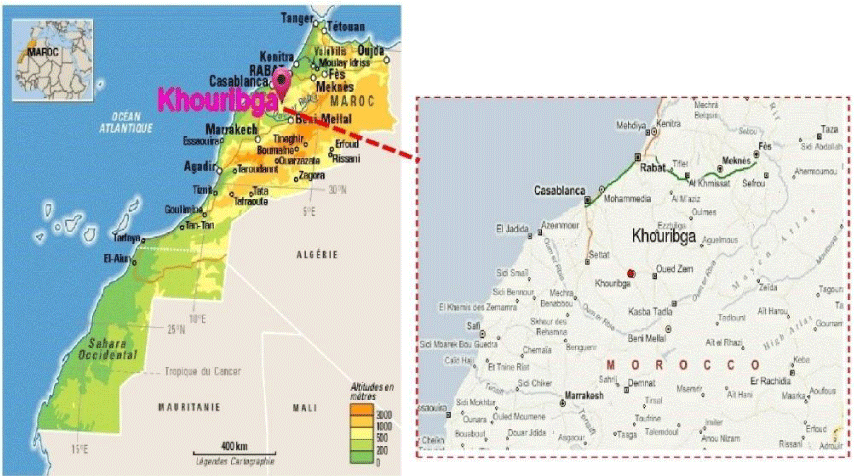
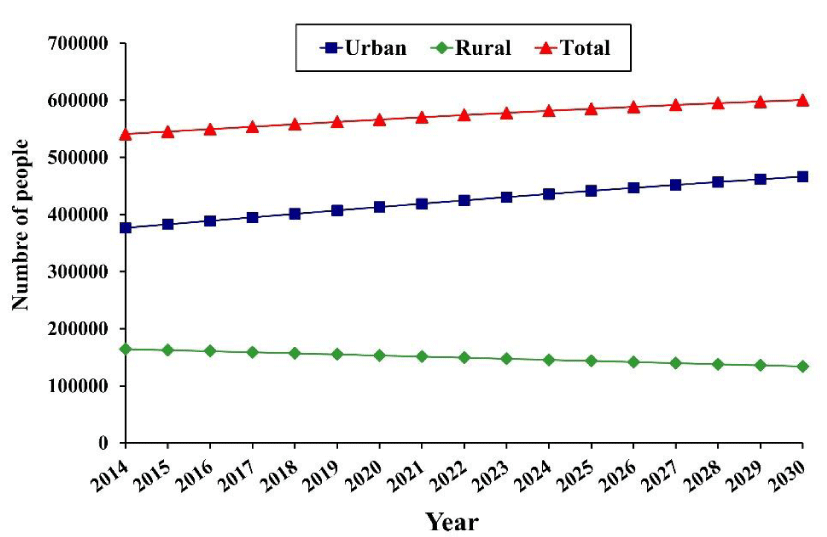
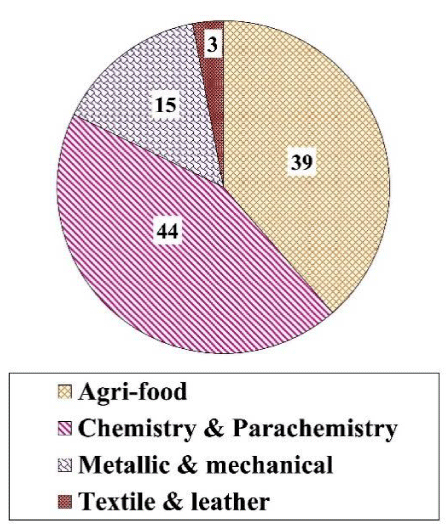
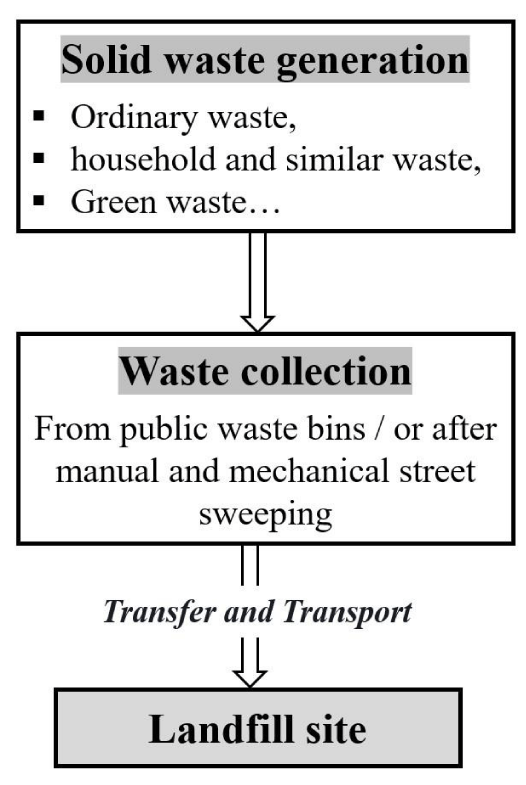
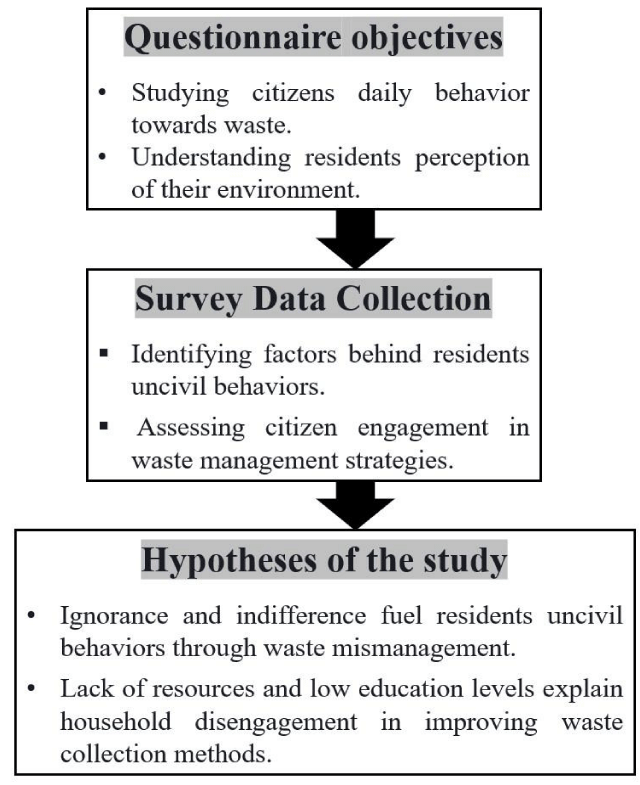
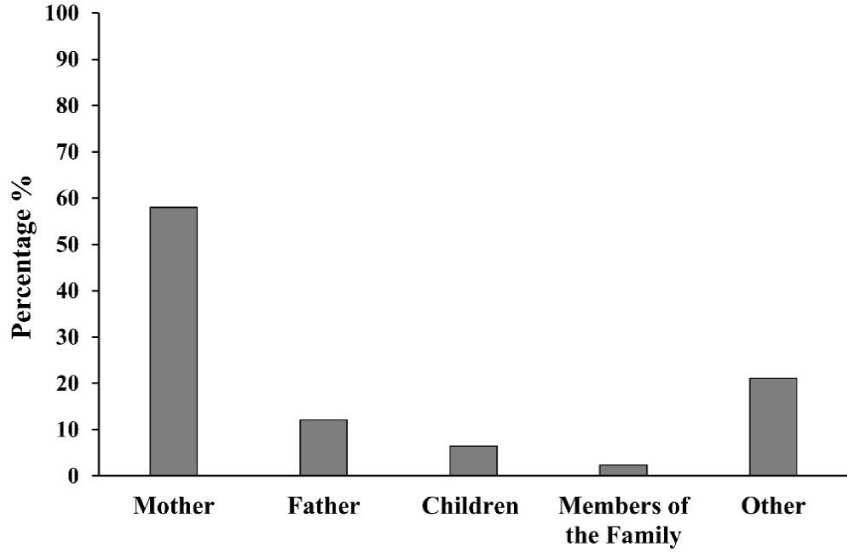
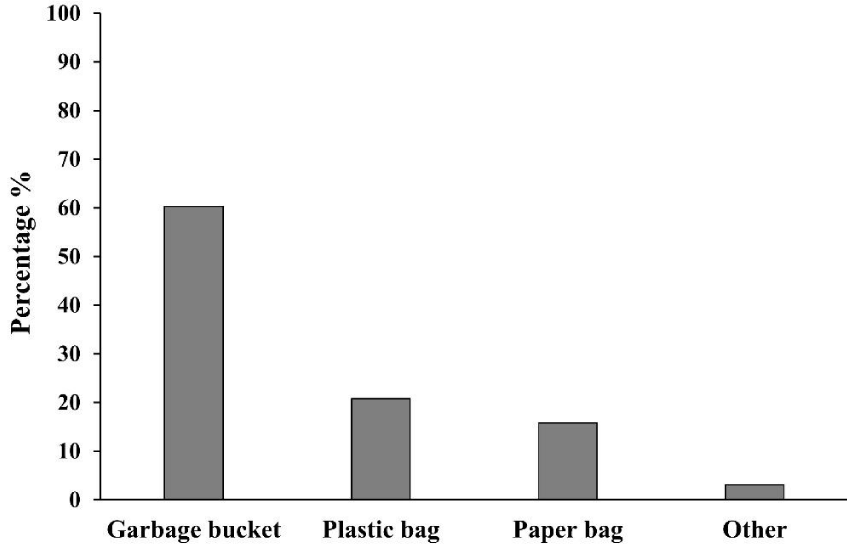
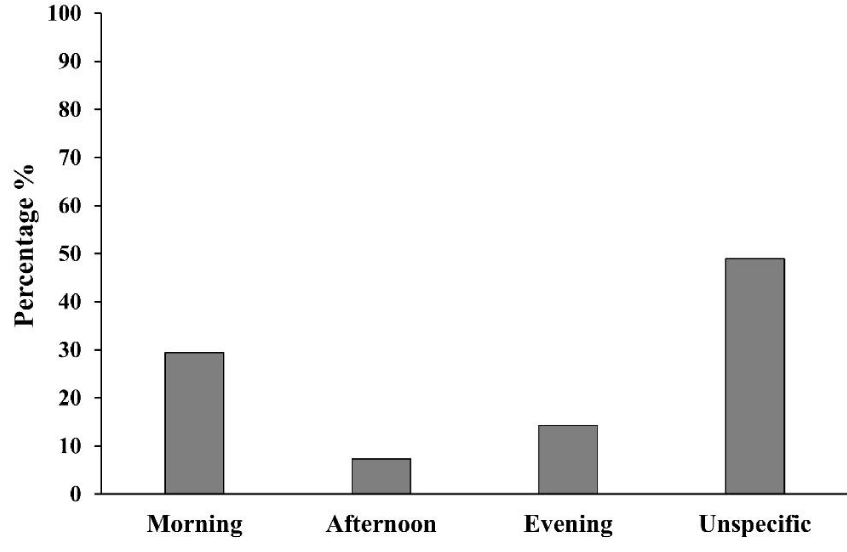
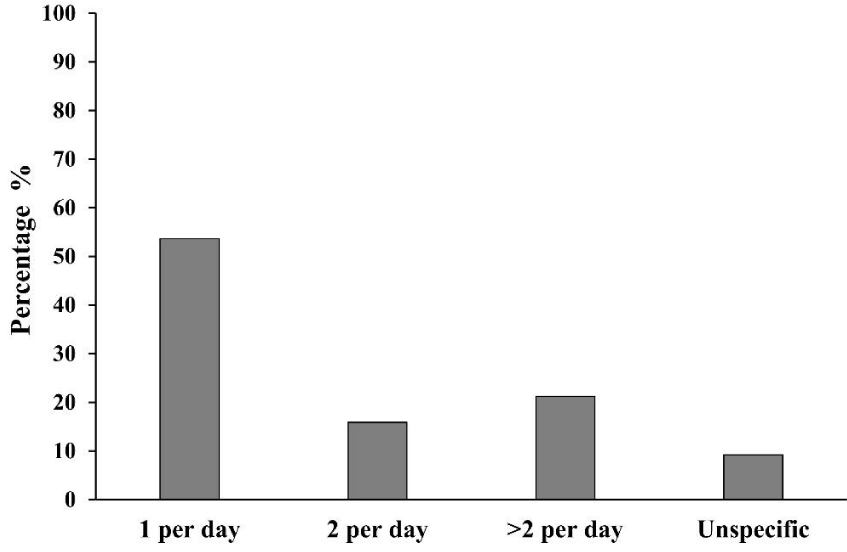
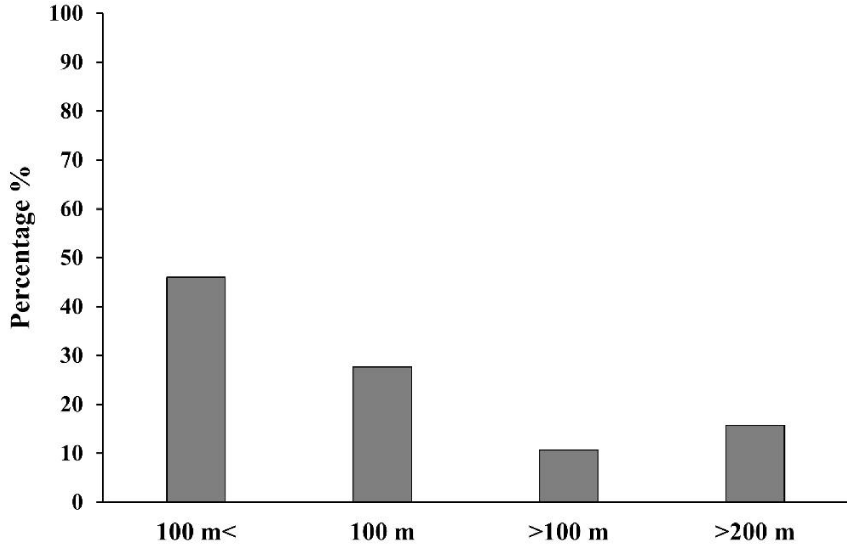
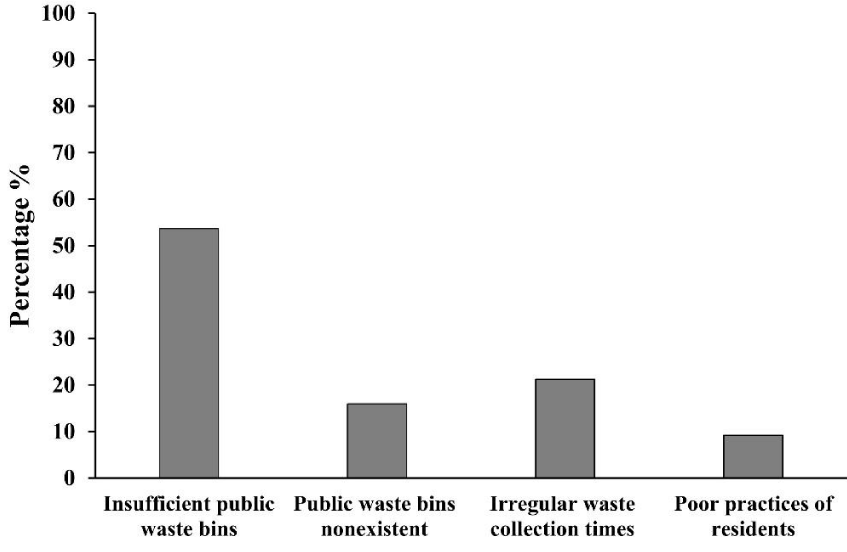
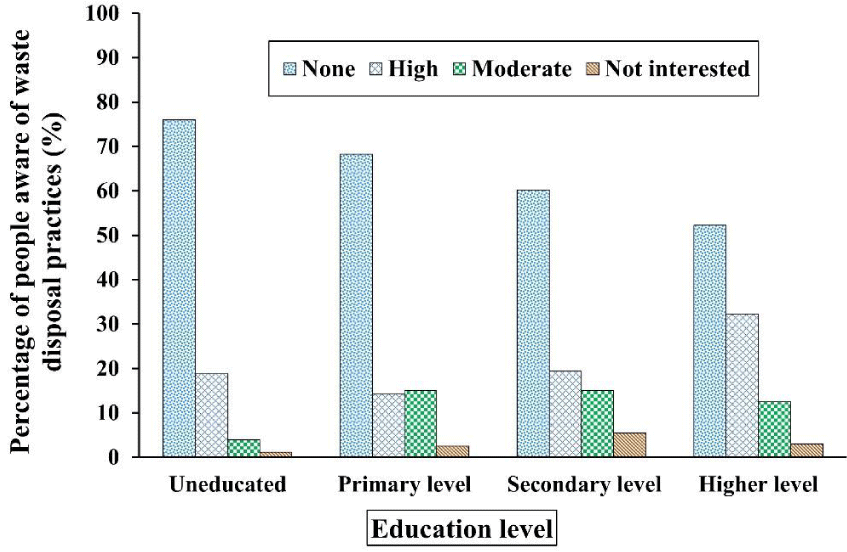
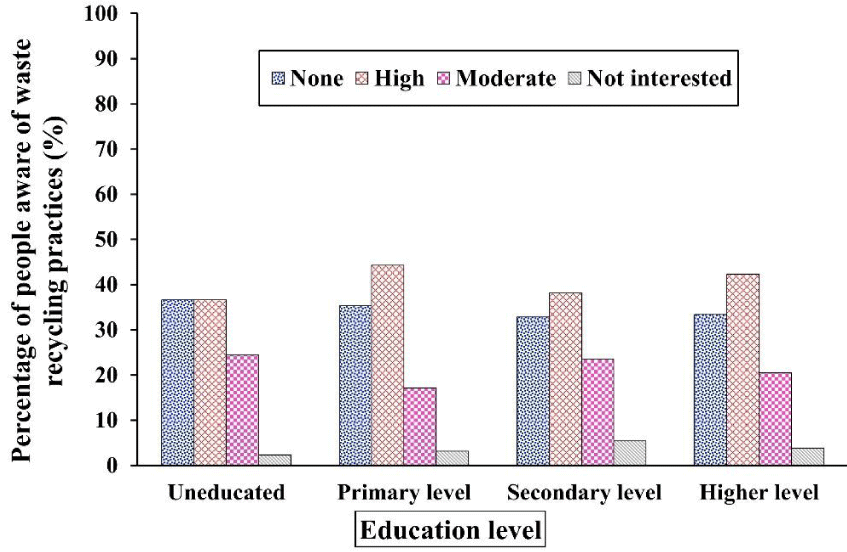


 Save to Mendeley
Save to Mendeley
